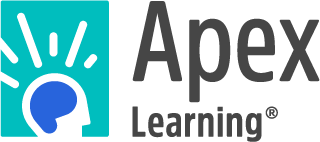Special education is the practice of educating students in a way that accommodates their individual differences, disabilities, and special needs. This involves the individually planned and systematically monitored arrangement of teaching procedures, adapted equipment and materials, and accessible settings. These interventions are designed to help individuals with special needs achieve a higher level of personal self-sufficiency and success in school and in their community, which may not be available if the student were only given access to a typical classroom education.
The California High School Proficiency Exam (CHSPE) was an early exit testing program established under California law. Testers who passed the CHSPE received a high school-equivalent diploma from the California State Board of Education. All individuals and institutions subject to California law that require a high school diploma are required to accept the CHSPE diploma as requirement fulfillment. The U.S. Office of Personnel Management has ruled it acceptable in federal civilian employment applications, and the U.S. Department of Education recognizes the CHSPE as a high school diploma equivalent for various purposes, including financial aid applications.

The International General Certificate of Secondary Education (IGCSE) is an English language based secondary qualification similar to the GCSE and is recognised in the United Kingdom as being equivalent to the GCSE for the purposes of recognising prior attainment. It was developed by Cambridge Assessment International Education. The examination boards Edexcel, Learning Resource Network (LRN), and Oxford AQA also offer their own versions of International GCSEs. Students normally begin studying the syllabus at the beginning of Year 10 and take the test at the end of Year 11. However, in some international schools, students can begin studying the syllabus at the beginning of Year 9 and take the test at the end of Year 10.
The California High School Exit Examination (CAHSEE) was an examination created by the California Department of Education, that was previously mandated to administer in high schools statewide in order to graduate. The examination was suspended in 2015, when Governor Jerry Brown signed a bill undoing the decade old requirement. It was originally created by the California Department of Education to improve the academic performance of California high school students, and especially of high school graduates, in the areas of reading, writing, and mathematics. In addition to other graduation requirements, public school students needed to pass the exam before they could receive a high school diploma.
Open admissions, or open enrollment, is a type of unselective and noncompetitive college admissions process in the United States in which the only criterion for entrance is a high school diploma or a certificate of attendance or General Educational Development (GED) certificate.

Apex Learning, Inc. is a privately held provider of digital curriculum. Headquartered in Seattle, Apex Learning is accredited by AdvancED.

The Tasmanian Certificate of Education (TCE) is the main credential awarded to secondary school students who successfully complete senior high school level studies in Tasmania, Australia. It was introduced in 1992 to replace Tasmania's old "High School Certificate", and partially restructured for 2007.
TVO ILC is the Canadian province of Ontario's designated provider of distance education and the exclusive provider of General Educational Development (GED) Testing in Ontario.
Cathedral School was a private, Roman Catholic school in Portland, Maine. Cathedral School was founded by Sisters of Notre Dame de Namur in 1864. The school offered classes from kindergarten to 8th grade. It was the "mother school" of Maine's parochial school system. Shortly after temporarily housing what was formerly known as West School from 2012-2013, the building became home to Portland Adult Education, an adult education program committed to helping adults take the HiSET test, a GED equivalent, and, in certain circumstances, earn a high school diploma.
A graduate certificate is an educational credential representing completion of specialized training at the college or university level. A graduate certificate can be awarded by universities upon completion of certain coursework indicating mastering of a specific subject area. Graduate certificates represent training at different levels in different countries, for example a graduate certificate is at master's degree level in Ireland, but is at a bachelor's degree level in the United Kingdom. In both cases, the graduate certificate represents less work than a degree at the same level.
HSED or High School Equivalency Diploma or HEP is comparable to achieving a high school diploma instead of simply proving the skills by taking the GED. Sometimes it can be synonymous. When spelled HSed it can mean home schooled.
Albany Options School is a public alternative school in Albany, Oregon, United States. It provides alternative education for students who are working below or above state benchmark standards. These opportunities include transitional programs, credit-recovery programs, higher-education courses and education through contracted services. Albany Options School is an accredited alternative school serving middle school, high school and GED students. The school also had a preschool program linked with the Boys & Girls Club of Albany at the Albany Options School, serving up to 20 children close to the age of 5.
The University of New Mexico–Los Alamos (UNM-LA) in Los Alamos, New Mexico, is a branch campus of the University of New Mexico. UNM-LA offers 14 certificate programs and 18 associate degree programs. In addition, UNM-LA offers a Dual Credit program, which allows high school students to take college classes, an adult basic education program for students seeking their New Mexico High School Equivalency Credential, and an ESL program. Students often work part-time at Los Alamos National Laboratory.

A certificate of attendance is an official document proving the attendance of a class, a language course or a training course.
A high school diploma is a diploma awarded upon graduation of high school. A high school diploma is awarded after completion of courses of studies lasting four years, typically from grade 9 to grade 12. It is the school leaving qualification in the United States and Canada.
Ability to benefit (ATB) is a term used in the context of post-secondary education in the United States to refer to students who have sufficient competency to benefit from post-secondary education but do not have a high school diploma or the Certificate of High School Equivalency. ATB, as assessed by government-approved tests, or high school Ed plan with 504 (IEP) with at least 1 year overlapping S.E.L.P.A as long as the student has taken and passed 5 hours of college or honors credits while on higher education plans. This is required for receiving financial aid by most US public colleges that admit students without a high school diploma or the certificate of equivalency. Until July 2012, such students could also receive student loans and grants from the US government if they had passed an approved ATB examination. However, the provision was dropped as part of the cuts to the Federal budget for fiscal year 2012.
The Test Assessing Secondary Completion, or TASC, was an alternative to a United States high school diploma, that was discontinued on December 31, 2021. It had been chosen by the states of New York and Indiana as a replacement for the GED exam, effective January 2, 2014.
HiSET is an alternative to a U.S. high school diploma, GED, and TASC test. The test was designed based on the OCTAE College and Career Readiness Standards for Adult Education. It is governed by ETS and is provided in cooperation with relevant authority of the state or territories.





